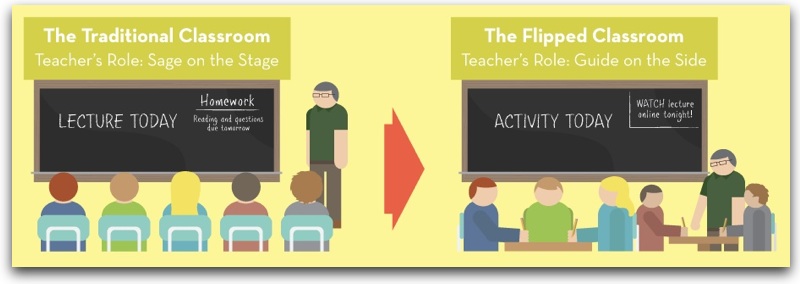Inverted Classroom
Acquiring knowledge outside the lecture hall—processing, deepening, and applying content on-site
What is Inverted Classroom?

What are the advantages?
“Flipping” a classroom in sense of the “Inverted Classroom Model” is an effective strategy for several reasons:
- individual learning speeds are taken into account
- the stronger activation of students leads to more in-depth knowledge
- in addition to subject-specific knowledge, social and multidisciplinary skills are also being promoted, and
- all people involved receive increased feedback: the lecturers on the comprehensibility of their explanations and the students' level of knowledge, the students on their own level of knowledge and on that of their fellow students
More information
Prof. Dr. Christian Spannagel (PH Heidelberg) offers an informative overview of the method "Inverted Classroom" in the following video:
We also recommend the Wiki of the Freie Universität Berlin (in German). It provides detailed information about the "Inverted Classroom" approach and offers interesting modules for personal development. We would also like to draw your attention to the video by Prof. Dr. Jürgen Handke, in which the teaching/learning scenario "Flipped Classroom" is explained in detail.
Support
The iLUB-team supports you in using the "Inverted classroom Model" and defining suitable deployment scenarios for your courses and projects.
